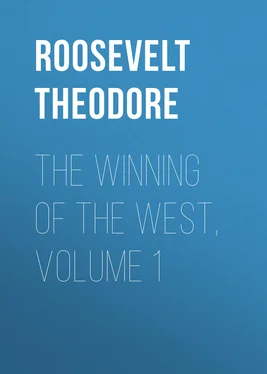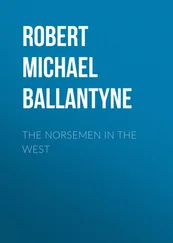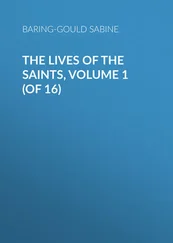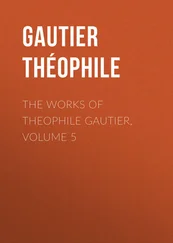Theodore Roosevelt - The Winning of the West, Volume 1
Здесь есть возможность читать онлайн «Theodore Roosevelt - The Winning of the West, Volume 1» — ознакомительный отрывок электронной книги совершенно бесплатно, а после прочтения отрывка купить полную версию. В некоторых случаях можно слушать аудио, скачать через торрент в формате fb2 и присутствует краткое содержание. Жанр: foreign_prose, История, foreign_edu, foreign_antique, на английском языке. Описание произведения, (предисловие) а так же отзывы посетителей доступны на портале библиотеки ЛибКат.
- Название:The Winning of the West, Volume 1
- Автор:
- Жанр:
- Год:неизвестен
- ISBN:нет данных
- Рейтинг книги:5 / 5. Голосов: 1
-
Избранное:Добавить в избранное
- Отзывы:
-
Ваша оценка:
- 100
- 1
- 2
- 3
- 4
- 5
The Winning of the West, Volume 1: краткое содержание, описание и аннотация
Предлагаем к чтению аннотацию, описание, краткое содержание или предисловие (зависит от того, что написал сам автор книги «The Winning of the West, Volume 1»). Если вы не нашли необходимую информацию о книге — напишите в комментариях, мы постараемся отыскать её.
The Winning of the West, Volume 1 — читать онлайн ознакомительный отрывок
Ниже представлен текст книги, разбитый по страницам. Система сохранения места последней прочитанной страницы, позволяет с удобством читать онлайн бесплатно книгу «The Winning of the West, Volume 1», без необходимости каждый раз заново искать на чём Вы остановились. Поставьте закладку, и сможете в любой момент перейти на страницу, на которой закончили чтение.
Интервал:
Закладка:
This only refers to the settlers of Detroit proper, and the farms adjoining. Of the numerous other farms, and the small villages on both sides of the straits, and of the many families and individuals living as traders or trappers with the Indians, I can get no good record. Perhaps the total population, tributary to Detroit was 2,000. It may have been over this. Any attempt to estimate this creole population perforce contains much guess-work.
11
State Department MSS., No. 150, Vol. III., p. 89.
12
Do Harmar's letter.
13
State Department MSS, No 30, p 453. Memorial of François Carbonneaux, agent for the inhabitants of the Illinois country. Dec 8, 1784. "Four hundred families [in the Illinois] exclusive of a like number at Post Vincent" [Vincennes]. Americans had then just begun to come in, but this enumeration did not refer to them. The population had decreased during the Revolutionary war, so that at its outbreak there were probably altogether a thousand families. They were very prolific, and four to a family is probably not too great an allowance, even when we consider that in such a community on the frontier there are always plenty of solitary adventurers. Moreover, there were a number of negro slaves. Harmar's letter of Nov. 24, 1787, states the adult males of Kaskaskia and Cahokia at four hundred and forty, not counting those at St. Philip or Prairie du Rocher. This tallies very well with the preceding. But of course the number given can only be considered approximately accurate, and a passage in a letter of Lt-Gov Hamilton would indicate that it was considerably smaller.
This letter is to be found in the Haldimand MSS, Series B, Vol. 123, p. 53, it is the 'brief account' of his ill-starred expedition against Vincennes. He says "On taking an account of the Inhabitants at this place [Vincennes], of all ages and sexes we found their number to amount to 621, of this 217 fit to bear arms on the spot, several being absent hunting Buffaloe for their winter provision." But elsewhere in the same letter he alludes to the adult arms-bearing men as being three hundred in number, and of course the outlying farms and small tributary villages are not counted in. This was in December, 1778. Possibly some families had left for the Spanish possessions after the war broke out, and returned after it was ended. But as all observers seem to unite in stating that the settlements either stood still or went backwards during the Revolutionary struggle, it is somewhat difficult to reconcile the figures of Hamilton and Carbonneaux.
14
In the Haldimand MSS., Series B, Vol. 122, p. 3, the letter of M. Ste. Marie from Vincennes, May 3, 1774, gives utterance to the general feeling of the creoles, when he announces, in promising in their behalf to carry out the orders of the British commandant, that he is "remplie de respect pour tout ce qui porte l'emprinte de l'otorité." [sic.]
15
State Department MSS., No. 48, p. 51. Statement of M. Cerre (or Carre), July, 1786, translated by John Pintard.
16
Do .
17
State Department MSS., No. 48, p. 41. Petition of J. B. La Croix, A. Girardin, etc., dated "at Cohoe in the Illinois 15th July, 1786."
18
Billon, 91.
19
An arpent of land was 180 French feet square. MS. copy of Journal of Matthew Clarkson in 1766. In Durrett collection.
20
American State Papers, Public Lands, I., II.
21
Fergus Historical Series, No. 12, "Illinois in the 18th Century." Edward G. Mason, Chicago, 1881. A most excellent number of an excellent series. The old parish registers of Kaskaskia, going back to 1695, contain some remarkable names of the Indian mothers—such as Maria Aramipinchicoue and Domitilla Tehuigouanakigaboucoue. Sometimes the man is only distinguished by some such title as "The Parisian," or "The Bohemian."
22
Billon, 90.
23
Letter of P. A. Lafarge, Dec. 31, 1786. Billon, 268.
24
State Department MSS., No. 150, Vol. III., p. 519. Letter of Joseph St. Mann, Aug 23, 1788.
25
Do ., p 89, Harmar's letter.
26
Do ., p 519, Letter of Joseph St. Marin.
27
Do ., p. 89.
28
Journal of Jean Baptiste Perrault, in 1783; in "Indian Tribes," by Henry R. Schoolcraft, Part III., Philadelphia, 1855. See also Billon, 484, for an interesting account of the adventures of Gratiot, who afterwards, under American rule, built up a great fur business, and drove a flourishing trade with Europe, as well as the towns of the American seaboard.
29
State Department MSS., No. 48, p. 25. A petition concerning a case in point, affecting the Priest Gibault.
30
"History of Vincennes," by Judge John Law, Vincennes, 1858. pp. 18 and 140. They are just such carts as I have seen myself in the valley of the Red River, and in the big bend of the Missouri, carrying all the worldly goods of their owners, the French Metis. These Metis,—ex-trappers, ex-buffalo runners, and small farmers,—are the best representatives of the old French of the west; they are a little less civilized, they have somewhat more Indian blood in their veins, but they are substantially the same people. It may be noted that the herds of buffaloes that during the last century thronged the plains of what are now the States of Illinois and Indiana furnished to the French of Kaskaskia and Vincennes their winter meat; exactly as during the present century the Saskatchewan Metis lived on the wild herds until they were exterminated.
31
See the lists of signatures in the State Department MSS., also Mason's Kaskaskia Parish Records and Law's Vincennes. As an example; the wife of the Chevalier Vinsenne (who gave his name to Vincennes, and afterwards fell in the battle where the Chickasaws routed the Northern French and their Indian allies), was only able to make her mark.
Clark in his letters several times mentions the "gentry," in terms that imply their standing above the rest of the people.
32
State Department MSS., No. 150, Vol. III., p. 89.
33
"Journal of Jean Baptiste Perrault," 1783.
34
"Voyage en Amérique" (1796), General Victor Collot, Paris, 1804, p. 318.
35
Do . Collot calls them "un composé de traiteurs, d'aventuriers, de coureurs de bois, rameurs, et de guerriers; ignorans, superstitieux et entêtés, qu'aucunes fatigues, aucunes privations, aucunes dangers ne peuvent arreter dans leurs enterprises, qu'ils mettent toujours fin; ils n'ont conservé des vertus françaises que le courage."
36
Letter of Commissioners Hawkins, Pickens, Martin, and McIntosh, to the President of the Continental Congress, Dec. 2, 1785. (Given in Senate documents, 33d Congress, 2d session, Boundary between Ga. and Fla.) They give 14,200 "gun-men," and say that "at a moderate calculation" there are four times as many old men, women, and children, as there are gun-men. The estimates of the numbers are very numerous and very conflicting. After carefully consulting all accessible authorities, I have come to the conclusion that the above is probably pretty near the truth. It is the deliberate, official opinion of four trained experts, who had ample opportunities for investigation, and who examined the matter with care. But it is very possible that in allotting the several tribes their numbers they err now and then, as the boundaries between the tribes shifted continually, and there were always large communities of renegades, such as the Chickamaugas, who were drawn from the ranks of all.
Читать дальшеИнтервал:
Закладка:
Похожие книги на «The Winning of the West, Volume 1»
Представляем Вашему вниманию похожие книги на «The Winning of the West, Volume 1» списком для выбора. Мы отобрали схожую по названию и смыслу литературу в надежде предоставить читателям больше вариантов отыскать новые, интересные, ещё непрочитанные произведения.
Обсуждение, отзывы о книге «The Winning of the West, Volume 1» и просто собственные мнения читателей. Оставьте ваши комментарии, напишите, что Вы думаете о произведении, его смысле или главных героях. Укажите что конкретно понравилось, а что нет, и почему Вы так считаете.












